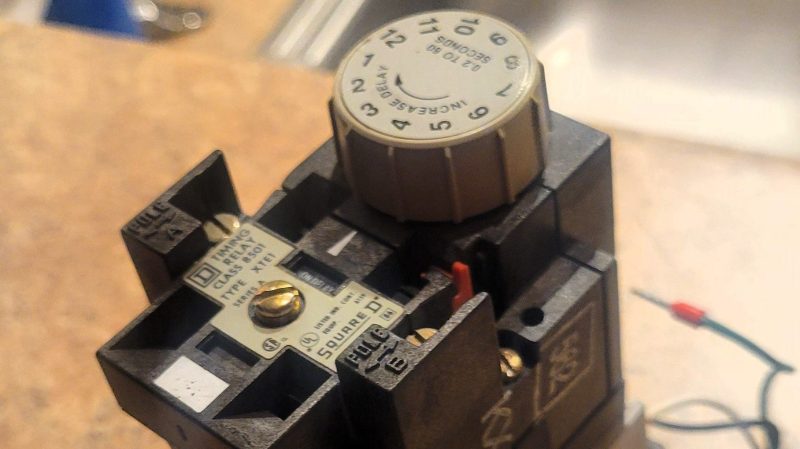These days, if you want to flash some LEDs, you’d probably grab a microcontroller. Maybe you’d go a little more old-school, and grab a 555. However, [Jacob] is even more hardcore than that, as evidenced by this chunky electromechanical flasher build.
[Jacob] goes into great detail on his ancillary write-up, describing how the simple building blocks used by industrial control engineers can be used to make a flasher circuit that cycles once per second. Basically, two relays are paired with two 0.5-second delay timers. The two relays tag each other on and off on delay as their timers start and expire, with the lamp turned on and off in turn.
We’ve had lots of other great entries to our One Hertz Challenge, too — from clocks to not-clocks. There’s still time to get an entry in — the deadline for submission is Tuesday, August 19 at 9:00AM Pacific time. Good luck out there!

















Nice, I’ve had one of those in my junk drawer for decades. Congrats on finding a use for yours… Kinda.
Eventually I assume mine will become a turn signal flasher with a fancy variable flash period. Maybe that’s a feature somebody wants… Ah who am I kidding, it will either go in a landfill or get auctioned off for twenty cents at an estate sale once I’m pumped full of formaldehyde.
20 cents? That’s optimistic!
There will be a full sale of your electronics and other stuff. This relay and other small things will be bought, carried to a new location and will wait the expiration of the newer owner. Then sold again. So on until our civilization will be gone. Then, an alien visiting our planet will pick it up from the rubble that was the last human owner lab, and bring it to his home planet as a souvenir. Then, as time will pass and civilization will raise and fall, this relay will mark their end and will be picked up at some point by the last tentacle that will touch it. Then it will have to wait in a pile of shiny things for the thermal death of the universe.
So I’ll say you should polish it, cover it in gold and cast it in resin, so it will be able to resist all those eons.
See you on the other side.
No, WALL·E will take it back to his stash!
My smoke alarm blinks its LED very briefly every 60 seconds.
I wonder if you can extract a 1 Hertz signal from such for the contest.
I expect it might just be a draining capacitor though that triggers a pulse, but I’m not sure.
if it’s an ionization smoke detector (Americium-241?) then might just a simple RC circuit to blink the LED, depending on how old it is.
if it’s a photoelectric smoke detector, it should have a microcontroller to handle the detection and hysteresis logic. It might be running on a crystal or resonator for the uC clock.
Nah it an European modern one with your standard IR reflection detection.
Never heard of a radioactive one used in Europe actually, I wonder if there are any. Maybe they were a thing in Easter-Europe and they still have some?
Hi Lewin! Thanks for showcasing my project on the blog! Its an honor! I’ve been reading the blog for over a decade now. There’s lots of really smart people on these parts of the internet. Shout out to Peter and his relay CPU! That things amazing!
I thought this would be an interesting solution going into the contest. Most of the projects on Hackaday tend to be more on the embedded hardware and software side. Working in industrial controls our solutions to tend to be over built and more expensive. When you are making machines that make machines cost is less of an issue, and up-time is very important. They’re designed so Bob in the maintenance department can fix the thing with a screw driver without specialized training or tools like SMD soldering or an oscilloscope.